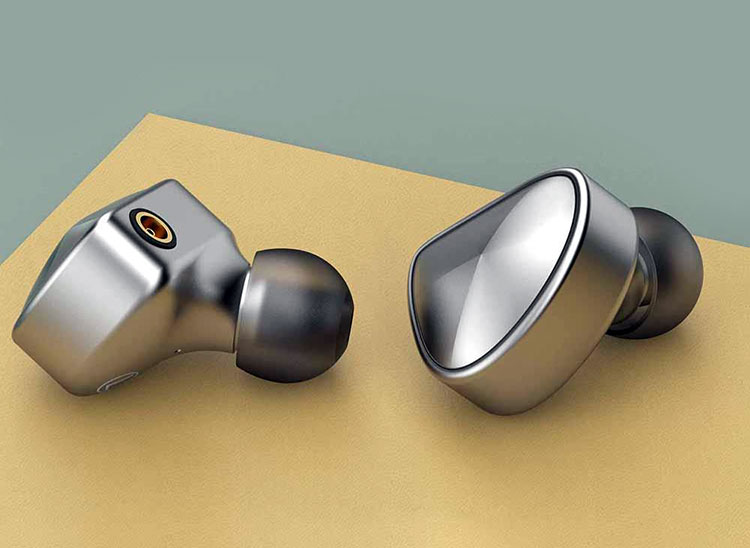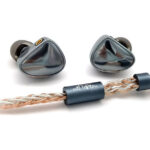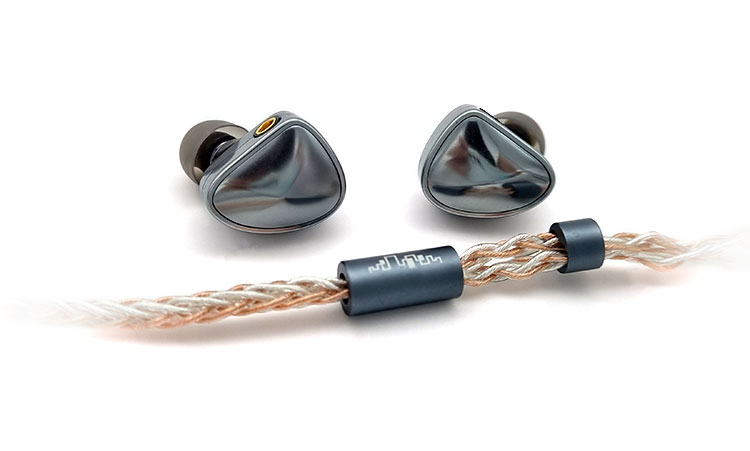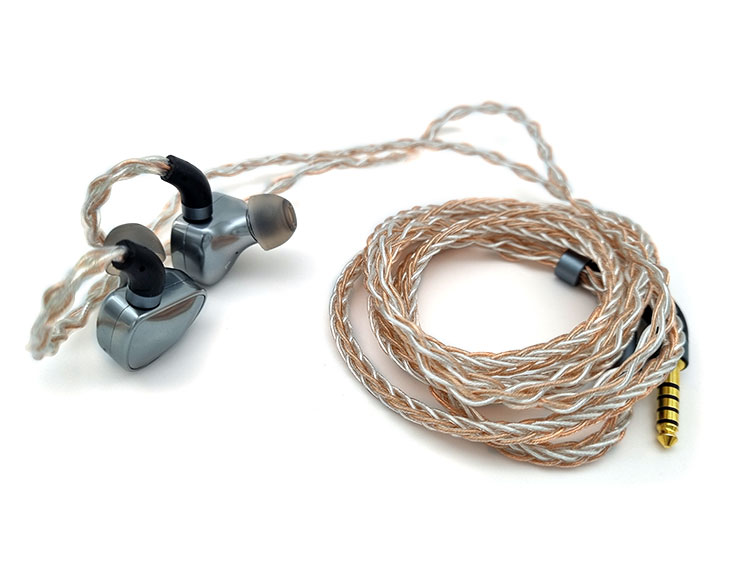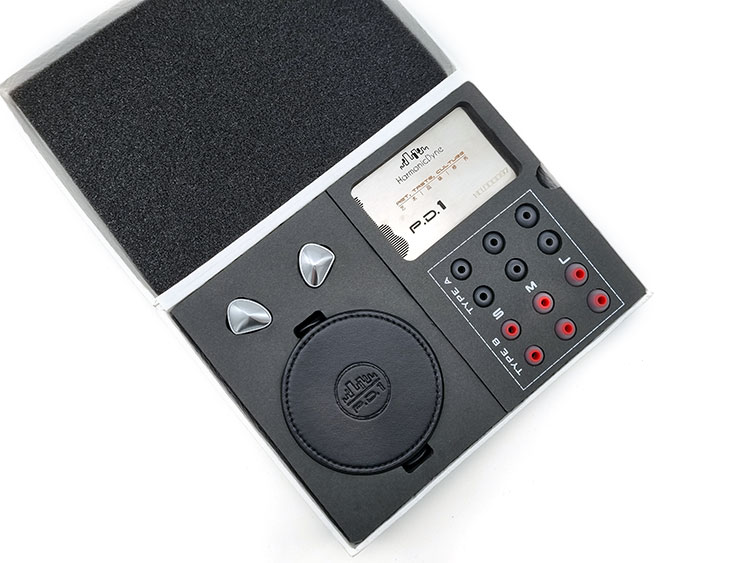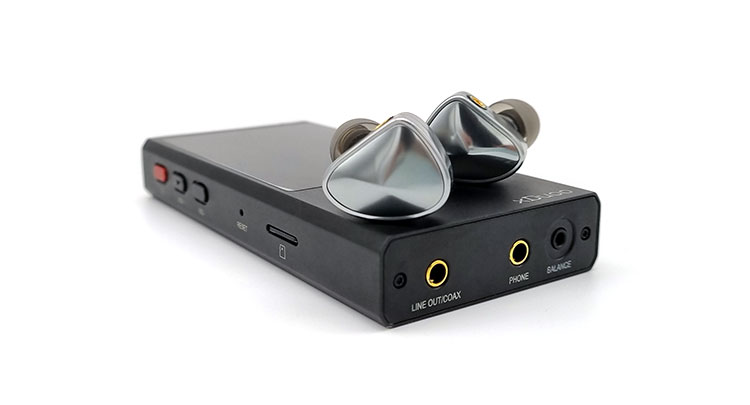The HarmonicDyne P.D.1 is a dual driver hybrid universal IEM featuring a 10mm dynamic driver and a 10mm planar driver. It is priced at $379.
Disclaimer: The HarmonicDyne P.D.1 sent to us is a sample in exchange for our honest opinion in this review. We thank the team at Linsoul for giving us this opportunity.
To read more about Linsoul reviews previously done on Headfonics please click here.
Note, this 2-page review follows our new scoring guidelines for 2020 which you can read up on here.
HarmonicDyne is a brand that has carved out its namesake for its competent, full-sized headphone releases in the chi-fi market, rivaling that of its North American and European counterparts.
Starting with its reasonably priced Helios, the headphones had begun to pick up steam in its initial Indiegogo campaign. Its ostentatious aesthetic, and its affordable price tag resonated well with an increasingly parsimonious audience.
Their latest full-sized headphone, the Zeus, marked a significant departure from the Helios, pricing itself at $379. Overall, each iteration to the next has been received positively by the community.
Today, we will be reviewing their P.D 1, HarmonicDyne’s first foray into the IEM market and a crowded arena in the portable audio world. Hoping to capitalize on their mastery of dynamic transducers in full-sized headphones, they are extrapolating their industry know-how into the miniaturized world of IEMs.

Tech Highlights
Planar
Many have tried to squeeze a planar-magnetic driver into an IEM chassis. Unfortunately, it is still a rather niche practice, and only a few brands have attempted to do so (think Tin HiFi, RHA, and especially Audeze).
Planar-magnetic drivers are hefty, inefficient but powerful drivers that display crystal-clear resolution, and deftness in speed and tactility.
It is no wonder that many experienced manufacturers see the value in planar-magnetic transducers. But they usually require an adequate amount of amplification or current from the source to perform optimally. Pair them with not-so-ideal sources, and you would be doing these power-hungry transducers a huge disservice.
Ratings
Thankfully, the P.D.1 has a highly efficient, 10mm planar-magnetic driver with a 16-ohm impedance @1kHz, and a sensitivity of 110dB/Vrms@1kHz. Akin to the Tri I3 by Kbear, the P.D.1 houses an additional 10mm dynamic driver, with its surround made of “Carbon Nano Tubes” (CNT), and the main flexure made of “Diamond-like Carbon” (DLC).
As a non-engineer, I suspect the addition of the P.D.1 was meant to bridge or fill the gaps in the frequency spectrum left by the planar magnetic driver.
In previous iterations of planar IEMs that I have tested (the Tin HiFi P2 etc), there tends to be a noticeable coarseness to the treble, and a less-than-substantial sub-bass response. I think the dynamic driver is meant to compensate for those audible limitations. Nevertheless, this is mere conjecture on my end as an audio enthusiast.
Design
The P.D.1 features a CNC-machined aluminum outer chassis with a lightly brushed outer faceplate. Its “right-angle triangle” shaped shells sat rather snugly in my ears, with no strange or odd protrusions to be found.
The nozzle length is appropriately sized, with an added lip to ensure your tip of choice stays attached to the P.D.1. The seam between the faceplate and the shell is expertly finished, with no visible jagged edges in between.
Subjectively, the design is quite spartan, and while I appreciate HarmonicDyne for deviating from the “acrylic” status quo, it would have been nice to have an aesthetic that was less industrial, and snazzier.
However, this is clearly a subjective critique. Overall, the entire structure of the IEM feels robust and inspires confidence in both its longevity and durability.
Cables
Harmonic Dyne has graciously included two cables; one pure copper and pure silver braided cable with a 4.4mm balanced termination, and a silver-plated copper cable with a 3.5mm balanced termination.
Both cables come supplied with an MMCX termination and are quad braided. Having two cables is a welcomed inclusion that many manufacturers should provide at this price point.
The includes cables are tightly braided but are still malleable without retaining many kinks or memory when they are coiled up. The strain reliefs on the MMCX connectors and the male ends are both strong, and flexible enough for safe tugs and pulls when you are out and about.
The Y-splits are also satin-finished, with the brand “HarmonicDyne” emblazoned on it. The MMCX connectors themselves snap tightly to the P.D.1’s chassis, with a unidirectional swivel to provide necessary movement when adjusting the IEM around your ears.
Both cables feel high quality, and I have little to no complaints to raise in this section.
Comfort & Isolation
Isolation-wise, there is a pin-hole-sized vent positioned diagonally below the nozzle, and 3 additional vents below the seam between the faceplate, and the P.D.1 chassis itself.
Usually, vents are a necessary feature with IEMs; that feature piston drivers in order to allow the entrapped back-wave to escape, or to alleviate its potentially cavernous bass response. The downside? IEMs with such vents are susceptible to ambient noise.
Surprisingly, it does not contravene its ability to isolate from external wind noise in the P.D.1. It still retains its volume fairly well. I would say it isolate 85% of ambient noise passively.
Packages & Accessories
Upon lifting its angular-shaped lid, you will be greeted by a gorgeous array of accessories organized neatly in each designated section.
The package includes the P.D.1 shells themselves, multiple silicon ear tips sectioned as “Type A” and “Type B”, a faux leather, hockey puck-shaped case, and both the aforementioned cables. It is a package that punches above its weight class, with so many complimentary inclusions that sweeten the entire unboxing experience.
Unfortunately, the quality of the case included in the package feels flimsy and cheaply made. The internal padding simply does not offer the P.D.1 adequate protection from shock. It still functions properly in the sense that it can prevent hairline scratches on the P.D.1, but it does not feel substantial in the hands.
Nevertheless, HarmonicDyne has curated a generous, and rewarding package.
Sound Impressions
Summary
Right out of the box, the P.D.1’s sound signature caught me off guard. In admittance, my unconscious bias is a result of my collective experience with planar-magnetic IEMs. The P.D.1 travels off the beaten road taken by its counterparts.
The P.D.1’s has a W-shaped sound signature, with a stronger emphasis on the upper-mids and highs, with a gentle, reassuring low-end. It is worth noting that the purported W-shape is not evenly distributed.
Tonally, there is a “Sennheiser-like” veil that results in a sweet-sounding lower-midrange that envelops the entire sound with a lo-fi-like quality. It is a gentle, and immersive listen with older, Americana recordings.
On the Angels of Light- Untitled Love Song, Michael Gira’s nasally vocals, alongside the vocal accompaniments of Jarboe, are excellently complemented by the P.D.1’s sound signature.
The draggy twang of the background bass guitar and the metallic stride on the acoustic guitar are slightly exaggerated in the lower-midrange to create a cabin-like atmosphere.
As cliched as it is, the P.D.1 harkens to a time where vacuum triodes were at the frontier of home hi-fi. To its detriment, the “veil” that clouds the entire frequency negates its ability to present music in a clear, and incisive manner.
It is not the most resolving transducer configuration, but it is one that plays to the strength of genre-specific tracks. This can be perceived as both a pro and a con. We will dive deeper as we visit further sections of the review.
Bass
The P.D.1’s bass has a slower resolving nature; it attacks, but it sustains longer than one would expect from a planar transducer. I suspect the addition of the dynamic driver was intended to add body, depth, and a decelerated decay.
Subjectively, it creates a rotund, punchy, and deeply engaging listen. On Jack White’s Boarding House Reach, the heavily warped, raw sound of Jack-White’s EVH guitar is embodied brilliantly by the P.D.1; it is voluptuous, explosive, and deep. It is an assertive sound that presents well to my casual listening sessions.
It is not an in-your-face, bass-assaulting signature. It is a nuanced, and mature approach to a warmer signature. But it is certainly skewed towards the mid-bass regions, with its sub-bass rumble pacing slower than the former.
On Tyler the Creator’s EARFQUAKE, the notoriously, unashamed bass-heavy trap beat is presented as it is; it still retains its unnatural, synthetic sound without boosting the lower regions. If you are bass-head chasing the next bass cannon, the P.D.1 is not that, nor is it trying to be.
Its greatest strength lies in its speed; its pillowy presence resembles the reverb-heavy confines of a cabin-in-the-woods; it fosters an environment that strengthens Americana works remarkably well. Acoustic guitars sound more full-bodied without going overboard, retaining their original timbre properties.
Overall, it is a fairly versatile bass response that pairs well with many genres, but it does not excel at all of them.
Mids
As touched upon earlier, the vacuum-tube analogy is mostly reflected here in the P.D.1’s midrange. Thankfully, the lower-midrange does not outpace its upper-mid presentation by a huge margin; there is a noticeable delineation in both realms, but it is not overdone.
In Carole King’s So Far Away, her raspy vocals are reflected well with its old-timey recording accouterments captured succinctly. It is an inoffensive tuning that accommodates many categories of music, doing Carole King’s lead vocals justice. However, it is not an exceptional performer in this realm; it favors tonality over raw detail and pristine clarity.
The veil that I talked about earlier masks some of its ability to capture more subtle, studio nuances that can be heard on picked up on higher-end gear. Admittedly, however, the P.D.1 is an addictive listen on casual engagements, where even-harmonics take precedence versus sonic detail.
The mid-bass bloom (as described prior) has a propensity for reinforcing second-order harmonics. For better or worse, it reinforces its characteristic warmish, saccharine lower mid-range floor.
On Neko Case’s Nearby Midnight in Honolulu, the chorus has some sharp, and shouty vocal melodies that sound grating on certain headphones and IEMs’. Here, it is muted by the P.D.1’s already relaxed signature. If the quality of the source is poor or suffers from dynamic compression, the P.D.1 plays off these imbued flaws well.
In essence, the midrange is gentle, showing a strong preference for an easy-going signature, with above-average detail. But if unassailable detail is the name of the game, it does a pretty decent job, but it does not outshine its competitors.
Highs
In the W-shaped frequency response of the P.D.1, the mids and lows take slightly more precedence over the highs. A few of its flaws start to unravel in the upper regions.
The P.D.1’s mid-bass pop and its cabin-esque properties gently blanket the P.D.1’s highs. Nonetheless, I suspect that the technical properties of both drivers do a good job capturing subtle nuances in certain tracks despite their blunted highs.
Iamamiwhoami’s Fountain is a song featuring hyper-porous, and spacious production; Jonna’s sonorous vocals simply ring like an airhorn across the whole song. It actually has a bite and realistic texture.
The juxtaposition of the full-bodied kickdrums and her whispery voice is excellently captured on the P.D.1. On occasion, it does sound a tinge metallic in specific registers. This phenomenon is not quite prevalent across the board, but only in songs where female vocals in the upper regions are heavily emphasized.
Overall, the highs leave me craving a little more detail; a consistent issue that has left me wanting across the whole frequency spectrum.
Granted, this was probably the sound signature HarmonicDyne was settling for, but I see the unbridled potential that has not been tapped into with its current iteration. It appears to be more of a technical problem, rather than a tuning-related one.
Soundstage & Imaging
At this price point, it is not all that surprising that the perceived headroom on the P.D.1 is not a lateral, out-of-head experience. But what it lacks in-depth, it makes up for imaging.
The stereo image is more in your head, but it is fairly consistent with most IEMs at this price point. It does a reasonable job, without excelling in this area.
Subjectively, I have a natural limit to how distant I want instruments, and vocals to be from my ears. I favor a natural stage using my head as the center image. Here, it satisfies my expectations and meets my set criteria.
However, there is some noticeable congestion on busier tracks. Granted, that would be expected given the more crowded back and front sections, but it does get overwhelmed quite a fair bit in complex sections where vocals are contrasted by coarse cymbals.
Imaging-wise, I think the P.D.1 punches slightly above its price point, but it does not too far from what I expect naturally in the mid-tier price bracket. Imaging is clean, reasonably distinct laterally, with instrumental and vocal positioning relatively easy to differentiate from one another.
On Steve Reich’s Music for 18 Musicians, his seminal piece of work is the ideal imaging test for IEMs in my collection. Each core component of the track, from the xylophone to the percussive elements littered throughout are positioned accurately.
For listeners used to the hyper-separated nature of balanced armatures, this does not quite reach those standards, but the P.D.1 favors realism more than reference-like separation. To surmise, I think the P.D.1 does not try to push beyond what is considered natural in terms of its staging, but it does so without appearing over-extended.
Click on page 2 below for pairings and select comparisons

